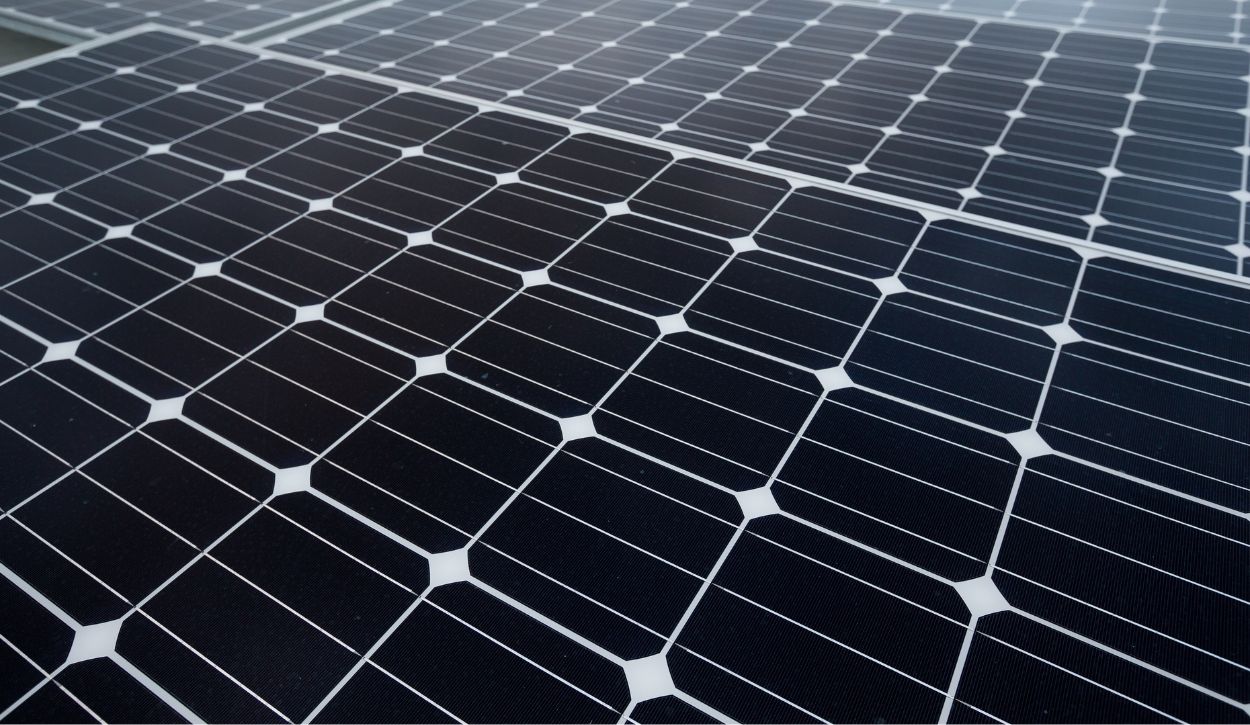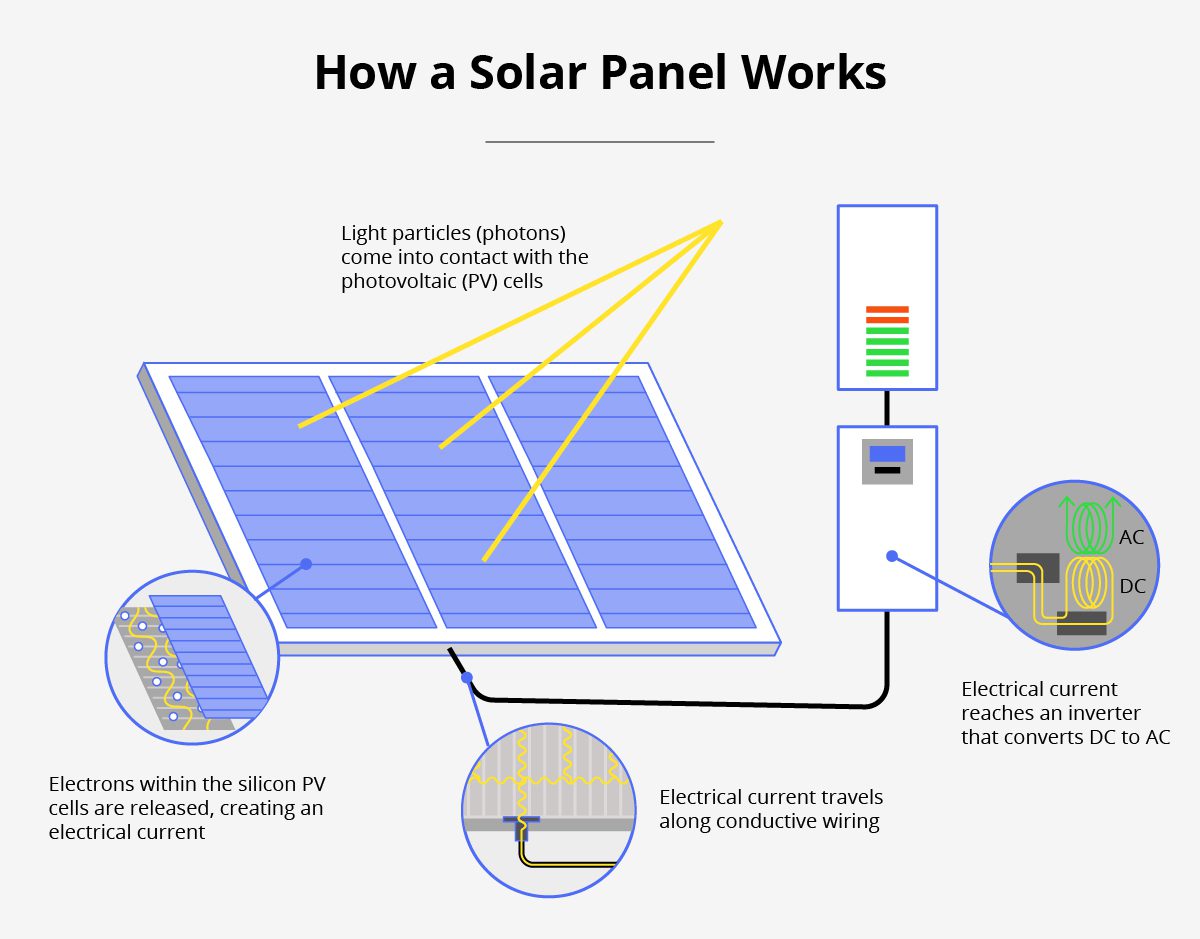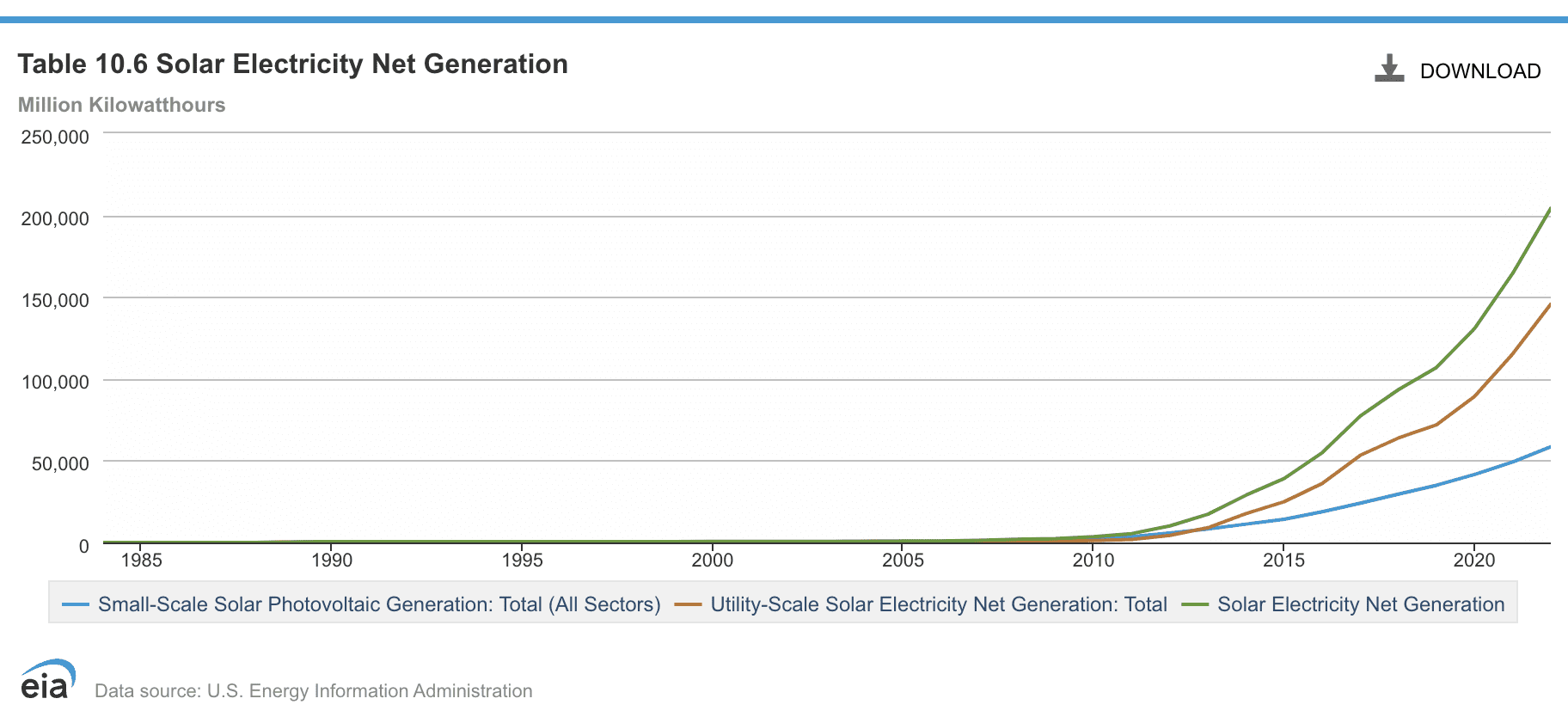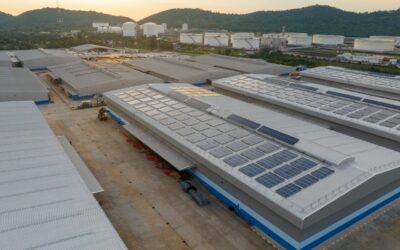How Solar Panels Convert Sunlight to Electricity
Solar energy is a broad term, encompassing the immense amount of heat and light produced by the sun and the innumerable inventions created to harness this form of energy as it reaches Earth. But in modern conversation, solar energy almost always refers to solar voltaics – using semiconductive materials to convert the sun’s energy into electricity. Unlike solar thermal energy which uses sunlight to heat liquids, solar voltaics rely on photovoltaic (PV) cells. A large system of PV cells is called a solar panel.
Solar panels were a breakthrough invention in the late 1800s, and thanks to improvements over the last century and a half, they have become a popular means for generating renewable, clean energy. Along with wind energy, solar energy has been an area of significant research and development for countries around the world that hope to supplement or replace fossil fuels with renewable energy sources. In the United States, solar energy is seeing commercial investment in the form of solar farms, while residents use solar panels to power their homes. Read on to learn more about how solar electricity works!
Discovery of the photovoltaic effect
French physicist Edmond Becquerel discovered the photovoltaic effect in 1839 at 19 years old. He observed the electric current generated by shining light onto an acidic solution containing platinum electrodes. The first solar panel would be invented in 1883 by American inventor Charles Fritts, building on Becquerel’s discovery of the foundational principle of modern solar energy.
What is a Solar Panel?

A solar panel is a collection of photovoltaic (PV) cells and is primarily composed of glass, metal, and silicon. “Photovoltaic” simply refers to the process of converting light to electricity through a semiconductive material. Polycrystalline or monocrystalline silicon is by far the most common semiconductor material, although there are alternative substances that can perform the same function. As we will see, the silicon in a solar cell is often “doped” with additives that change the electronic properties of the silicon and increase the efficiency of the solar panel.
Monocrystalline solar cells are the most efficient and the most expensive type of PV cells. These cells are made from a single silicon crystal and appear black. Polycrystalline cells are made from multiple silicon crystals melted together, and they take on a bluish hue. Polycrystalline panels are less efficient than monocrystalline panels but are cheaper to manufacture.
How Solar Panels Convert Light into Electricity
Solar panels harness the power of photovoltaic technology, generating electricity for homes, commercial buildings, and even portable devices. As explained above, the photovoltaic cells in solar panels are usually made of either polycrystalline or monocrystalline silicon which serves as a semiconductive material. As particles of light come into contact with the PV cell, the photons energize the electrons in the silicon, building an electrical charge as they are displaced. The freed electrons travel toward the front of the PV cell surface, and conductive wiring in the panel lets the electric current travel to the inverter.
Inverters are the key to how electricity is transferred from solar panels. An inverter converts the direct current (DC) created by the solar photovoltaic cells to alternating current (AC) which can be used to power anything from small, electronic devices to large buildings.
How Solar Panels Work Step-by-Step
1. Energy from the sun reaches the photovoltaic cells in the form of light particles, or photons
2. Electrons in the semiconductive material are released from the atom, creating an electrical charge
3. The electrical current travels by conductive wiring until it reaches the inverter
4. The inverter converts the direct current (DC) to alternating current (AC)
The graphic below illustrates this process.

Additives for Improved Performance
PV cells made purely of silicon would struggle to produce an electric current strong enough to make a solar panel worthwhile. Modern solar panels usually incorporate two layers of silicon, one with boron and one with phosphorus additives.1 When the two layers are joined together, the bottom layer of silicon doped with boron becomes positively charged, while the top layer of silicon doped with phosphorus becomes negatively charged.2 The resulting electrical field in the thin junction between these layers facilitates more efficient movement of electrons toward the surface of the panel.3
Performance Factors
While the amount of energy a solar PV panel produces is affected by the weather, solar cells still function on cloudy days – as long as the panel is exposed to the sun’s rays. And while we associate the sun with heat, solar panels function perfectly well in below-freezing temperatures. In fact, cold temperatures improve a solar panel’s energy production, since the energy output of the panel relies on the difference between the electrons at rest and the electrons in motion. Cold temperatures maximize this difference, making the solar panel more efficient.
How Solar Energy is Used
Solar power is used in both industrial and residential settings – from large solar farms that occupy vast land areas to solar panels installed on roofs. Both large-scale and small-scale solar energy generation contribute to the electric grid mix in the United States.
Small-Scale Residential Projects

In 2022, residential solar projects generated over 37 billion kWh (kilowatt-hours) of electricity.4 Given that the average annual energy consumption of an American household in 2022 was 10,791 kWh, residential solar panels generated enough electricity to power almost 3.5 million homes for a year. Metering programs are one way that residential areas are encouraged to use solar technology. Homeowners who use alternative sources of energy can receive a credit on their utility bills if their solar panels generate excess energy that can be returned to the electric power grid.
Utility-Scale Solar Projects

Sunny regions of the United States have found success incorporating solar power into their electrical grid, with California and Texas leading the nation in utility-scale solar electricity generation.5 Regions that experience both consistent sunlight and heavy winds have a unique advantage, as they can install complementary solar and wind farms. Texas is the best example of a state that is able to achieve high “complementarity” between renewable energy sources.6 Solar and wind farms in Texas compensate for each other during the times and seasons when one energy source suffers from lower power output.
In 2022, solar photovoltaic energy made up 3.3% of the total utility-scale electricity generation in the U.S.7 While that percentage might not sound like a lot, it represents 141 billion kWh of electricity – enough to power over 10 million homes for a year.8
The Future of Solar Power

Chart showing small-scale and utility-scale solar electricity net generation in the United States between 1984 and 2022 9
Over the last decade in particular, the U.S. has steadily increased its investment in solar electricity generation. Wind power still outperforms solar in terms of power capacity from renewable energy sources, but solar panels have proven to be a helpful supplement to other energy sources. We can expect that with continued advancements in solar technology, solar projects will continue to grow across the United States.
Planning a solar project? Titan’s heavy haul services include transportation of solar panels for commercial or residential projects across the U.S.
Endnotes
1. https://www.pbs.org/wgbh/nova/solar/insi-nf.html
2. https://www.eia.gov/totalenergy/data/browser/index.php?tbl=T10.06#/?f=A&start=1949&end=2022&charted=0-4-9-10
3. https://www.eia.gov/energyexplained/solar/where-solar-is-found.php
4. https://www.vox.com/science-and-health/2019/1/7/18167351/texas-energy-solar-wind-renewables-ercot
5. https://www.eia.gov/tools/faqs/faq.php?id=427&t=3
6. https://www.eia.gov/tools/faqs/faq.php?id=97&t=3
7. https://www.eia.gov/totalenergy/data/browser/index.php?tbl=T10.06




